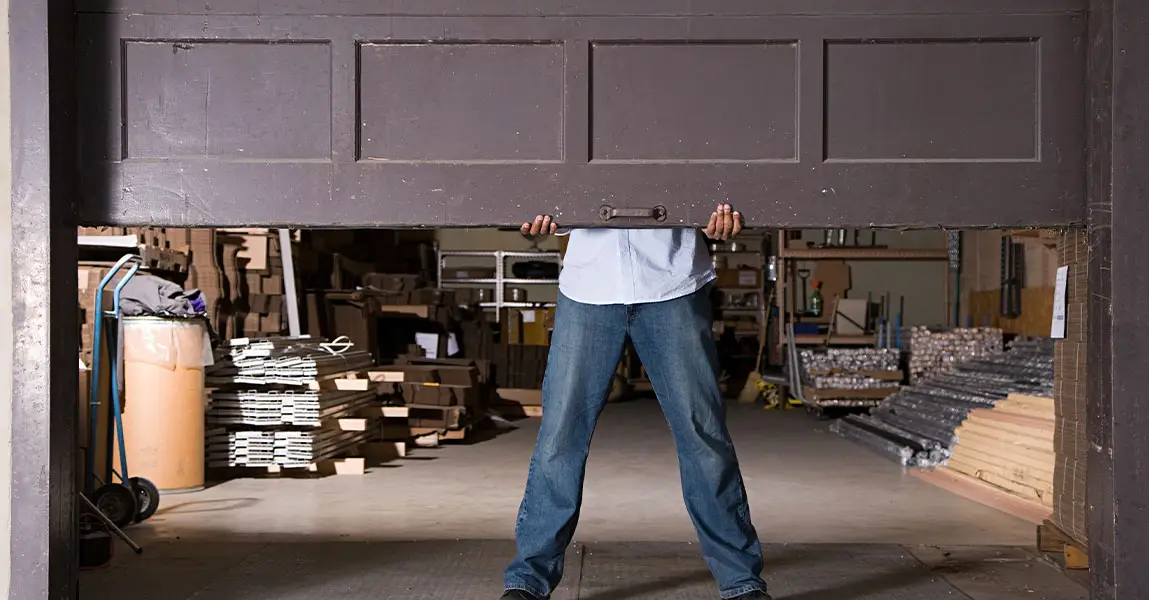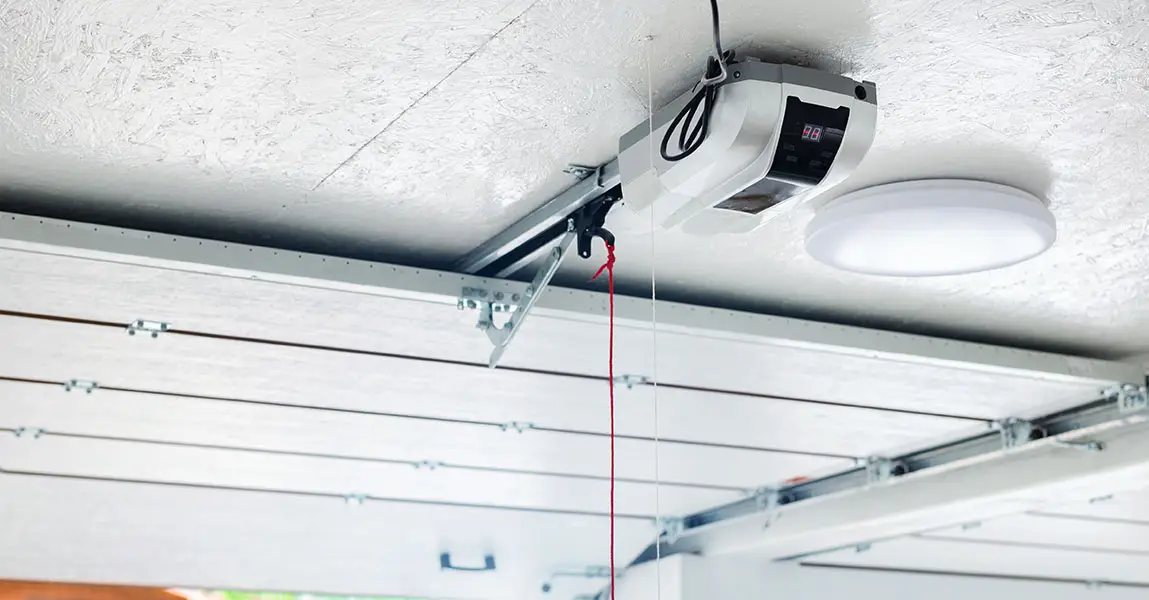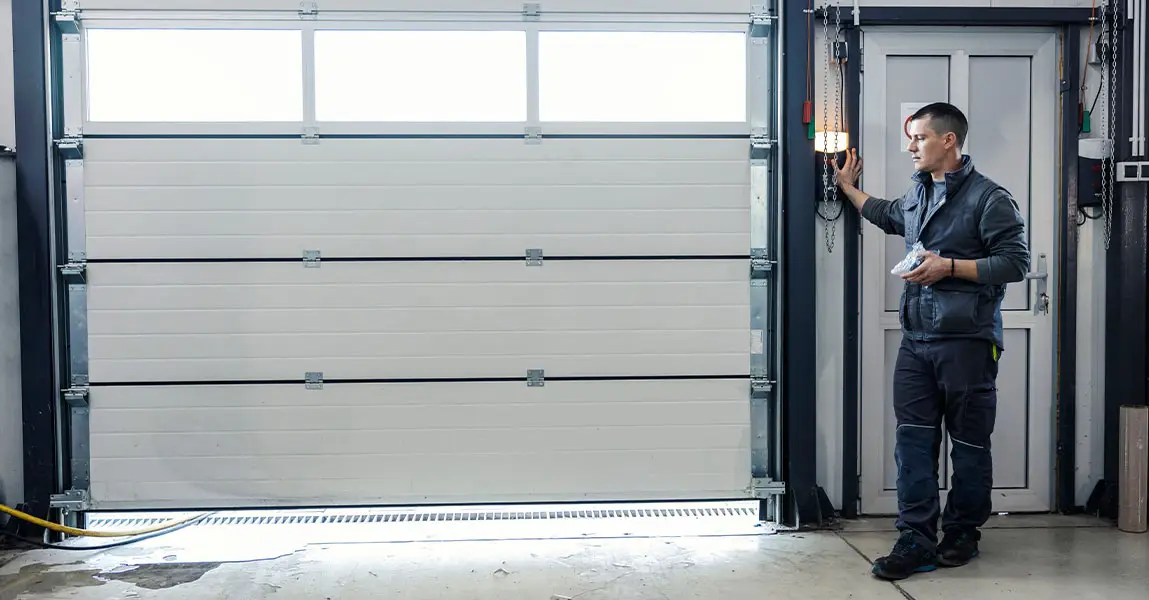Why Garage Doors Break More Often Than You Think
Garage doors do a lot of heavy lifting—literally. They open and close multiple times a day, and over time, all that motion takes a toll on the parts that make them work. Therefore, it’s no surprise that even a well-maintained door will eventually have problems. The key is knowing which signs to watch for and when it’s time to bring in someone with the tools and experience to handle it properly.
In other words, understanding what goes wrong helps you know what to expect when someone shows up to fix it. This article breaks down the most common garage door problems homeowners deal with and explains how professionals usually go about repairing them.
Door Won’t Open or Close
This is probably the most common issue. The door either refuses to move at all or only opens partway and then stops. In some cases, it closes but immediately reverses. So what causes it? Often, it’s something simple like dead batteries in the remote or a misaligned sensor. However, it can also be due to a broken spring or a damaged track.
To clarify, professionals always begin with a basic inspection. They’ll check whether power is reaching the opener and test the safety sensors. If those aren’t the problem, they move on to mechanical parts. Springs, in particular, are high on the list because they’re under tension and take the most stress. Fixing a spring is not a DIY job, it requires the right tools and safety measures, which is why Garage Door Repair Services are often necessary for such repairs.
Strange Noises During Operation
Garage doors should be relatively quiet. If yours starts groaning, grinding, or squealing, that’s a clear signal that something isn’t right. Most importantly, different noises point to different problems. A high-pitched squeal might mean dry rollers or loose hardware. A grinding noise may suggest the opener is struggling to move the door due to resistance somewhere along the track.
Professionals typically start by tightening loose bolts, lubricating metal parts, and checking the rollers. In some cases, rollers made of plastic or metal without ball bearings wear down quickly. Replacing them with nylon rollers is a common upgrade. Consequently, this not only reduces noise but also improves the smoothness of operation.
Door Is Off Track
When a garage door slips off its track, it may become stuck in place, or worse, lopsided. That is to say, one side might hang lower than the other, making the whole door look crooked. This can happen if a car bumps the door or if a roller breaks during use.
Repairing a door that has come off its track is one of those jobs best left to pros. They’ll begin by disconnecting the opener to prevent movement, then carefully realign the rollers and inspect the tracks for damage. If any hardware is bent or worn out, it will need replacing before the door can be safely reconnected.
Broken Springs
Springs are crucial. They counterbalance the weight of the door so it can open and close smoothly. However, they’re also one of the first parts to fail. You’ll usually hear a loud bang when a torsion spring breaks, and the door will feel impossible to lift.
Replacing a spring requires careful unwinding of what’s left and rewinding the new one with proper tension. For that reason, trained professionals use specific tools and follow strict safety steps. Trying to fix this yourself is risky and can result in serious injury. If you’re not sure whether the spring is the issue, it’s best to get in touch with a technician to inspect it properly.
Remote or Wall Switch Isn’t Working
Sometimes, everything looks fine, but the door simply won’t respond when you press the remote or wall button. This can be frustrating, especially when there’s no visible damage. It might be a power issue, but it could also be a problem with the opener’s circuit board or antenna.
Technicians often test each control point one by one. Firstly, they rule out dead batteries and unplugged power sources. Secondly, they examine the opener itself. If the wall switch works but the remote doesn’t, the problem is usually with the remote. However, if neither works, it might be an electrical issue that requires replacing the circuit board.
Garage Door Opens Then Reverses
If your garage door begins to close and then suddenly reverses, it’s usually due to a problem with the safety sensors. These sensors sit near the floor on each side of the door, and they send a signal across the opening. If something blocks the beam, the door won’t close.
That said, it doesn’t always mean something is actually in the way. Dirt, spiderwebs, or misaligned sensors can interfere just as much. Professionals will clean the lenses, check their alignment, and ensure the wiring is intact. In some cases, the sensors themselves may be faulty and need replacement.
Door Moves Unevenly or Gets Stuck
An uneven door can result from many things, worn rollers, bent tracks, or broken cables. The cables, in particular, play a huge role in balanced lifting. If one snaps or comes loose, the door can shift to one side and jam.
To fix this, pros examine the entire lift system. If the cable has frayed or snapped, they replace it and then recheck the pulley system. Moreover, they verify that the tracks aren’t bent or obstructed. Once everything is realigned and tested, the door should operate evenly again.
Opener Runs But Door Doesn’t Move
If you hear the motor humming but the door doesn’t budge, the issue is often with the drive system. Chain drives, screw drives, and belt drives each have parts that wear down or slip over time. For instance, a broken gear in the opener may cause the motor to spin freely without engaging the door.
Repair here involves opening the motor housing and examining the internal parts. A stripped gear or snapped belt is relatively easy to spot, but replacing it takes care and the right part. Similarly, professionals also check the connection between the opener and door arm to make sure nothing has come loose.
Weather Stripping Is Damaged or Missing
Weather stripping keeps out wind, water, and debris. Over time, however, it starts to crack or peel. When this happens, gaps form along the bottom or edges of the door. Not only does this affect insulation, but it can also allow pests inside.
Replacing weather stripping is straightforward but needs to be done precisely to create a tight seal. Pros will usually remove the old material, clean the surface thoroughly, and install new stripping that fits the door’s exact dimensions. In addition, they’ll check for gaps around the frame and seal those if needed.
Light on Opener Blinks Constantly
A blinking light on your garage door opener is the system’s way of saying something’s not right. Usually, it indicates a sensor issue or a fault in the opener’s programming. To clarify, each model may have different blink patterns to signal different problems.
Technicians refer to the opener’s manual or code system to interpret the light. Once they know the source—whether it’s a wiring issue, sensor misalignment, or motor fault, they can fix or reset it. Most importantly, they test the system afterward to confirm the issue is resolved.
Tips for Keeping Your Door Working Longer
Preventing problems is often easier than fixing them. A simple maintenance routine goes a long way. Firstly, lubricate the rollers, hinges, and springs every few months. Secondly, clean the tracks with a damp cloth and check for obstructions. Moreover, keep an eye on the balance of the door. If it starts to open slowly or unevenly, it might be time to call in a professional.
You can also schedule annual inspections through providers offering Garage Door Repair Services. That way, small issues can be spotted early before they become costly repairs.
FAQs
Why won’t my garage door close all the way?
The most common reason is a sensor issue. If the sensors are dirty or misaligned, the door will reverse for safety. Checking their alignment and cleaning them may solve the problem.
How long do garage door springs last?
Most torsion springs last around 10,000 cycles. If you open and close your door four times a day, that’s about seven years. After that, replacement is usually necessary.
Is it safe to replace garage door parts myself?
Some tasks like lubrication or weather stripping are safe to do yourself. However, spring or cable replacement should always be handled by a professional due to the risk of injury.
What causes garage door remotes to stop working?
Dead batteries are the first thing to check. If batteries are fine, it might be a range issue, damaged remote, or a problem with the opener’s receiver.
Can I prevent future garage door problems?
Regular maintenance helps a lot. Keep parts clean and lubricated, check the door balance periodically, and have the system inspected annually to catch issues early.










